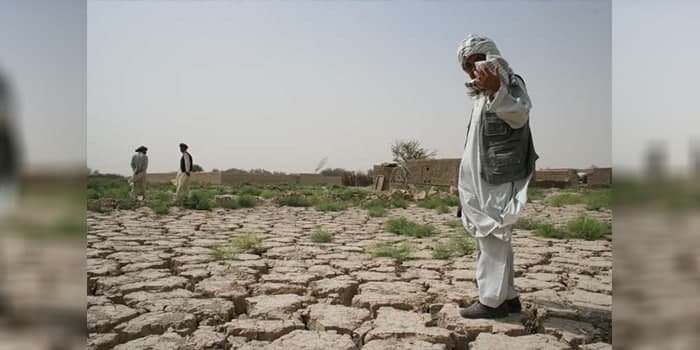Afghan farmers express concerns as the country is facing a risk of predicted drought in 2021. New data suggests that Afghanistan will be facing a water shortage in coming years—that will affect a large number of the population who mostly depend on agriculture.
Farmers like Sher Hossein in the central highland of Bamyan express deep concern about the future. “We cannot survive hunger and I am disappointed,” Hossein, who is the breadwinner of a seven-member family, told Kabul Now.
A 2018 UN report suggested that drought directly affected more than two-third of Afghanistan with around 10.5 million people were severely affected. At least 300,000 people were internally displaced by a drought that year.
The Ministry of Agriculture, Irrigation, and Livestock (MAIL) said that lack of rainfall and climate change put Afghanistan’s agriculture at a risk.
Ali Akbar Rustami, the spokesperson for the MAIL, said that this year Afghanistan’s agriculture products will shortfall as rainfall was lesser than previous years. The drought will affect pasture, agriculture, and livestock in the country, he said. The MAIL urged the people, relevant government sectors, and the international community to get prepared for risk management.
Ashraf, a farmer in the eastern Nangarhar, is also concerned about his farmland. He says a likely drought will affect his farmland and livestock. “This year, I do not know what to do because the wells are also drying up. The livestock is in need of grass while the hills and mountains are all dry. I will face a huge loss this year,” he said.
According to the MAIL, Afghanistan has a total of 3.6 million hectares of arable land and 3.8 million hectares of rain-fed lands of which 2.6 million hectares are cultivated.
Some farmers say that lack of electricity and cool stores also contribute to their problems.
Shamsuddin, a farmer in Kandahar, criticizes the government for inattention. “Drought on one hand, and lack of cold store, on the other hand, is a serious problem we have been facing.”
A report by the Meteorological Department on rainfall in 2020 shows that the level of rainfall has decreased by 20 to 25 percent.
“Drought is a natural disaster. Afghanistan may also face drought this year because there was no snow and rainfall in the past winter,” said Sayed Padeshah Hashimi, an agriculture expert. Mr. Hashimi says the government is unprepared to manage the risk of drought that will affect a large population. He urges the MAIL and international aid organizations to take the necessary action to manage the risk.
Afghanistan is an agricultural country where nearly 75 percent of the population depends on rainfall-fed agriculture and livestock. At a critical time when the country is grappling with nearly four decades of bloody conflict, drought will add to the misery of the people of Afghanistan.




